|
-
21st January 09, 11:58 AM
#1
The Effects of Kilt Yardage on Body Heat Loss
The Effect of Kilt Yardage on Body Heat Loss in a Cold Environment
Introduction. Among persons who wear kilts, especially those who dwell in higher latitudes, the relative warmth of various kilt styles is an oft-discussed topic. Recent threads in the online forum “X Marks the Scot” (www.xmarksthescot.com) have in particular debated the relative merits of eight-yard, knife pleated kilts (aka, “tanks”) and four-yard, box-pleated kilts. The present study was undertaken in an effort to quantify the relative heat retention of these two garments, hopefully to finally provide an objective and scientifically valid answer to the question “Is an eight-yard wool kilt warmer than other kilts?”
“Heat” is actually a measure of molecular motion; the faster the molecules, the higher the recorded temperature. All insulative materials have one feature in common, that being the ability to slow down the transfer of molecular motion (i.e., heat). The ability of a material to resist heat transfer is commonly referred to as “R value”; the higher the R value the better the material serves as an insulator. Typically, R value is significantly affected by both the molecular structure of the insulator, and the amount of air trapped by the insulator. Traditional home and pipe insulators function by trapping a layer of air between the inner and outer environments, and being themselves poor conductors of molecular motion. As the traditional (and still commonly used) material for kilt construction is wool (the hair of the domestic sheep, Ovis aries), and since wool has an excellent and well-deserved reputation for being an excellent insulator (i.e., relatively high R value), two kilts, constructed of wool but containing different amounts of fabric, were compared. A third kilt constructed of 60% polyester and 40% cotton was also included in the study to serve as an outgroup comparison.
Materials. Three kilts were used in this study. The first kilt was a deeply knife-pleated kilt (31 pleats) in the Montreat Scottish Society (NC) tartan. The cloth is 16-ounce wool fabric, fully lined with cotton, and pleated to the red stripe. This kilt contains 7.80 running yards of fabric (see fig. 1).
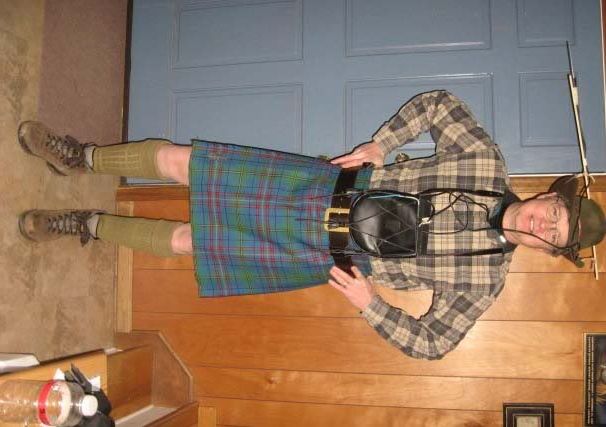
Figure 1. Montreat Scottish Society 8-yard 16-ounce wool kilt.
The second was a box-pleated kilt made of 16-ounce wool in the Carolina tartan. This kilt contains exactly four running yards of fabric, box-pleated (nine pleats) to the white stripe, and is also fully lined with a single thickness of cotton cloth (see fig. 2). Both kilts measure 25 inches from the selvedge to the top of the waistband.
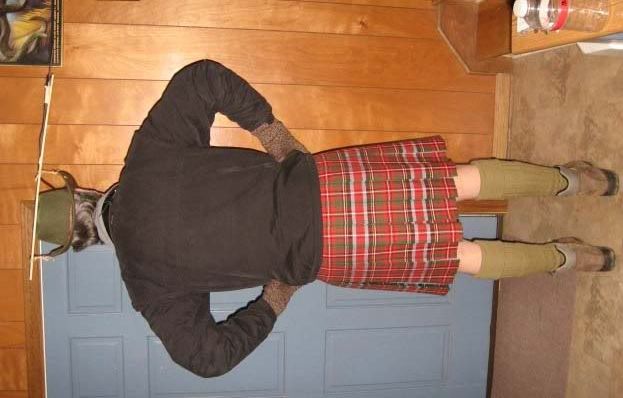
Figure 2. Carolina tartan 4-yard box-pleated 16-ounce wool kilt.
The third kilt was an unlined poly/cotton hiking kilt in Tigerstripe camouflage, 24” long, and knife pleated (15 pleats).
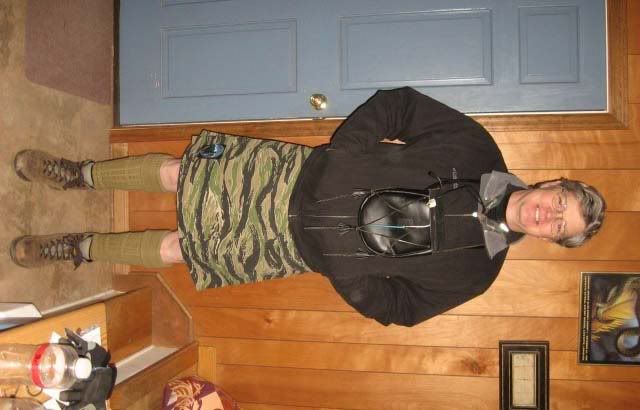
Figure 3. Tigerstripe camouflage polyester/cotton blend knife-pleated kilt.
To record temperatures, a “LabQuest” portable data recorder (Vernier Software and Technology, Beaverton, OR, USA) was employed. This battery-operated device is capable of recording data from up to four sensors simultaneously, storing the data, performing basic graphical and statistical analysis, and uploading collected data to a computer (both Mac and PC platforms are supported). Three stainless steel temperature sensors were connected to the LabQuest. Pre-trial tests indicated that the three probes were calibrated to within 0.1 degrees C of one another.
Temperature probes are capable of ascertaining the temperature of gases, liquids, or solid-surface contacts. Since the goal of the experiment was to compare the environments within the kilts, it was determined that sensor-to-skin contact was to be avoided, but that contact between sensor and the inner lining of the kilt was unavoidable. To this end, two sensors were sewn to a pair of cotton boxers (fig. 4). The boxers were worn in the same position throughout the study, so that the sensors remained in the same position relative to the researcher’s body. One temperature probe was located along the midline of the rear of the boxers and the other was located 2 inches to the wearer’s right of the midline of the front of the boxers.
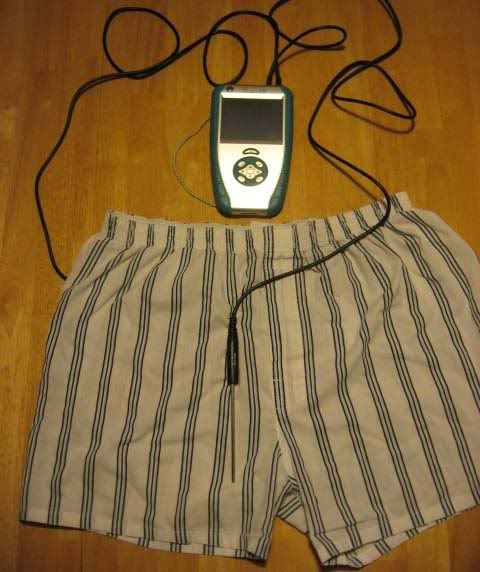
Figure 4. Boxers with two temperature sensors attached.
To record ambient temperatures, a third sensor was mounted to a wooden dowel, approximately one meter in length, to avoid conductive and radiant heat transfer from the researcher’s body. The dowel was attached to a brown, wool fedora. During the test period the LabQuest unit was stored in a leather sporran hung around the researcher’s neck. (see figures 1 and 3)
Questions and hypotheses. It is obvious that the amount of insulative fabric present in the rear of an eight-yard kilt is approximately twice that of a four-yard kilt. That being the case, and all other factors held constant, it is only reasonable to expect heat transfer to be slower through the fabric in an eight-yard kilt. However, since both garments are open to the environment, does this free air exchange negate the effect of fabric thickness in the actual temperature of the air within the kilt? (i.e., what is the validity of the reply “Hot air rises” when a kilt-wearer is asked if he is cold?). Therefore, the first hypothesis under scrutiny is that there will no difference, or perhaps a slight but statistically insignificant difference, in air temperature in the rear of the wool kilts, but that both will be warmer than the poly/cotton kilt. Since all three kilts have comparable amounts of fabric in the front, it would seem probable that the temperatures recorded in the fronts of the wool kilts would also be insignificantly different, leading to a second hypothesis which states that there will be no significant difference between the temperatures recorded in the fronts of the wool kilts, but that both would be warmer than the poly/cotton kilt.
Another important factor is to be considered is air movement. It is obvious that air trapped within a semi-enclosed space will be more rapidly evacuated and replaced with air from the surrounding environment if either or both of these air masses is moving. Therefore, the heat retained within a kilt will be affected by the movement of the air around it, within it, or both. This certainly comes as no surprise to anyone who has worn a kilt for any length of time whatsoever. But how does walking-induced air movement affect the retention of heat within kilts of varying construction? After considerable thought, and several drams of single-malt MacCallum, the principle researcher concluded that once walking was introduced as a variable, the advantage of extra yardage (if there was one at all) would be reduced or totally negated. Further consideration (and at least one more dram) resulted in the proposistion...ppropasishun...propazishun...idea that perhaps the additional lateral pendular movement (hereinafter, “swish”) of the heavier kilt might actually exchange the air within the garment more efficiently, thereby losing heat to the environment even more rapidly than would a kilt with more a modest swish factor. The procedure was, therefore, modified to test the hypothesis that walking would actually result in a decrease in the relative temperature of the air within the heavier kilt.
Procedure. On the night of January 16, 2009, the principle researcher (hereinafter, me or I or some other personal pronoun...third-person is so stiff and I just don’t have the energy to keep that up any longer) donned (very carefully) the sensor-equipped boxers. The decision to conduct this research after dark hinged on the slower temperature changes typical after sunset relative to the daytime hours and to avoid the possibility of differential warming of the kilt fabric via infrared solar radiation. (It also reduced the possibility of the neighbors having even more reason to talk trash about me.) My legs were covered with a pair of WPG khaki kilt hose and a pair of brown, insulated leather hiking boots. The kilt hose were pulled up in direct violation of the pull/scrunch rule, but considering the time of day and the low ambient temperature the presence of kilt police was judged to be unlikely. My torso was covered with a North Face expedition-weight undershirt, an LL Bean “tartan” flannel shirt (egad!), and a Columbia short insulated jacket. Wool gloves and the afore-mentioned temperature-sensing fedora completed the experimental outfit. Utilizing a coin-flip, the eight-yard kilt was chosen as the first kilt to be tested.
Meteorology: Skies partly cloudy. Winds very light (estimated 0-4 km / hr) from the West/Northwest. Ambient temperature at the beginning of the trials was -2.1 degrees Centigrade.
I stepped outside and turned on the LabQuest unit. All three probes were set to record the temperature in degrees C four times per minute for 15 minutes.
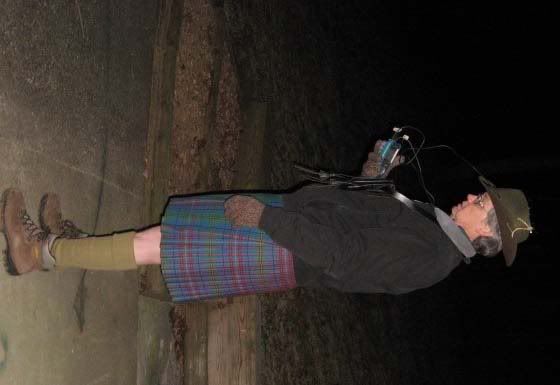
Figure 5. Data collection.
Last edited by Tartan Hiker; 25th May 10 at 06:15 PM.
Kilted Teacher and Wilderness Ranger and proud member of Clan Donald, USA
Happy patron of Jack of the Wood Celtic Pub and Highland Brewery in beautiful, walkable, and very kilt-friendly Asheville, NC.
New home of Sierra Nevada AND New Belgium breweries!
-
Similar Threads
-
By ChromeScholar in forum General Kilt Talk
Replies: 5
Last Post: 6th January 08, 03:42 PM
-
By souzaphone711 in forum General Kilt Talk
Replies: 30
Last Post: 23rd March 07, 11:47 AM
-
By freddie in forum Kilt Advice
Replies: 3
Last Post: 1st April 06, 10:14 PM
-
By toadinakilt in forum General Kilt Talk
Replies: 2
Last Post: 30th July 05, 05:07 PM
 Posting Permissions
Posting Permissions
- You may not post new threads
- You may not post replies
- You may not post attachments
- You may not edit your posts
-
Forum Rules
|
|




















Bookmarks